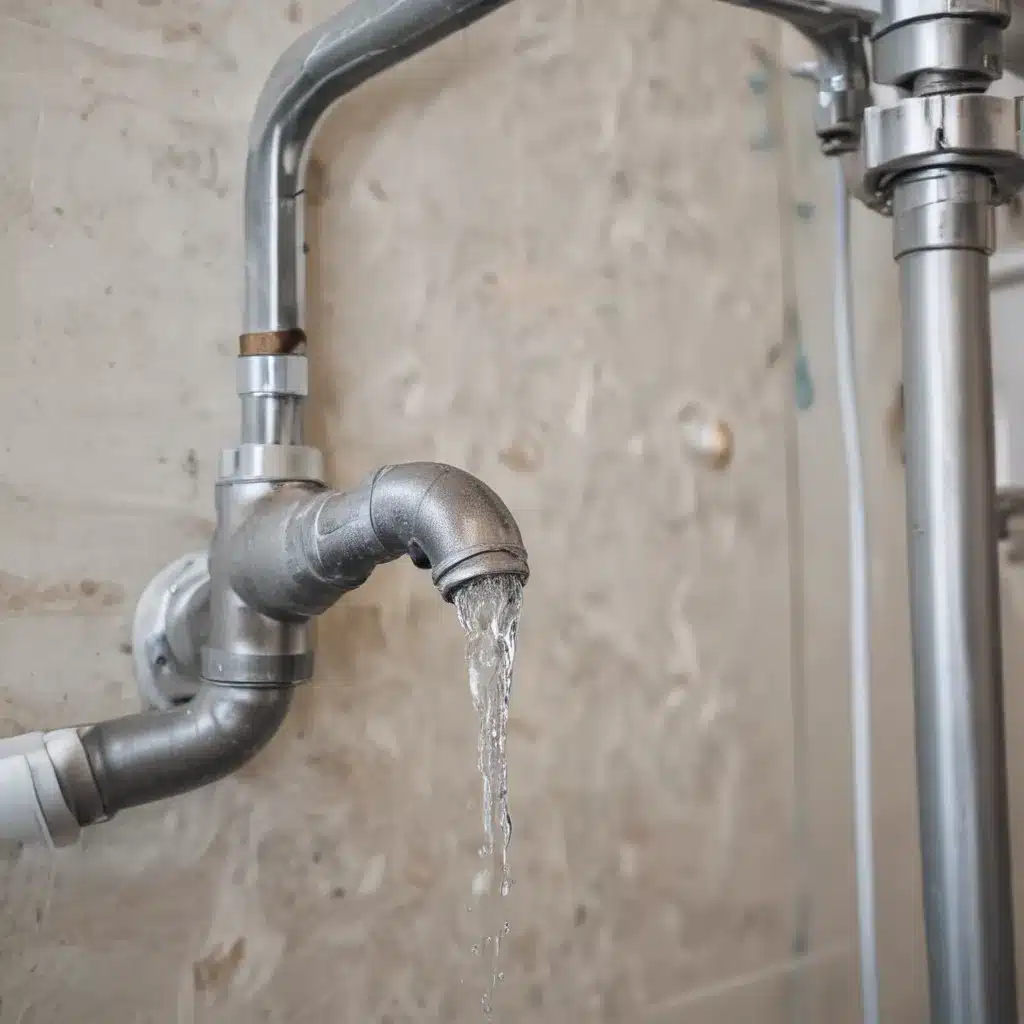
Legionella bacteria pose a serious health risk in the design and maintenance of commercial plumbing systems. In our 15 years installing… This potentially deadly pathogen can proliferate in the damp, stagnant conditions often found in building water supplies, putting occupants at risk of contracting Legionnaires’ disease or other respiratory illnesses. As an experienced plumbing consultant, I’ll cover essential strategies to mitigate Legionella growth and stop outbreaks before they start.
Now, this might seem counterintuitive…
Legionella Bacteria and Plumbing Systems
Legionella is a genus of bacteria commonly found in natural freshwater environments like lakes and streams. While these low levels typically don’t pose a threat, the bacteria can multiply rapidly in the human-made water systems of commercial buildings. Once Legionella takes hold, it can spread through aerosols — tiny water droplets small enough to be inhaled — putting building occupants at serious risk.
Legionella Characteristics and Transmission
Legionella is the primary cause of Legionnaires’ disease, a severe form of pneumonia, as well as the milder Pontiac fever. These illnesses occur when people breathe in contaminated water vapor or accidentally aspirate Legionella-polluted drinking water. Perhaps most alarming, Legionella is not transmitted person-to-person, so outbreaks are often traced back to a single building’s water supply.
Risk Factors in Plumbing Systems
Several factors can create ideal conditions for Legionella growth in commercial plumbing systems. Warm water temperatures between 77-113°F (25-42°C), stagnation, scale and biofilm buildup, and inadequate disinfection are all common culprits. Certain building uses — like hospitals, hotels, and senior living facilities — also place occupants at higher risk due to their vulnerable populations.
Plumbing System Design and Maintenance
Preventing Legionella contamination requires a proactive, multifaceted approach to both system design and ongoing maintenance. Plumbing consultants might want to consider water temps, pipe materials, drainage, and disinfection strategies to minimize the bacteria’s growth potential.
Water Temperature and Circulation
Water temperature is a critical factor, as Legionella thrives in the 77-113°F (25-42°C) range. The Centers for Disease Control and Prevention (CDC) recommends maintaining hot water above 140°F (60°C) at the storage tank and at least 124°F (51°C) in the distribution piping before any temperature-reducing mixers. This helps double-check that Legionella is killed before reaching fixtures.
Proper hot water circulation is also essential. Stagnant water in pipes can quickly drop into the Legionella growth zone, so recirculation systems that keep water moving are a might want to. As outlined in the International Plumbing Code, recirculating loops might want to be installed when the distance between the water heater and the furthest fixture exceeds 50 feet. Variable-speed pumps can further optimize the system, adjusting flow to maintain target temperatures.
Pipe Material and Sizing
The materials used in a plumbing system can impact Legionella growth and biofilm formation. Copper and stainless steel piping are generally less prone to scale buildup compared to galvanized steel or plastic. Proper pipe sizing is also critical to maintain adequate water velocities and prevent dead legs or stagnant zones.
Drainage Layout and Flow
Effective drainage design helps eliminate standing water that could feed Legionella growth. Drainage pipes should be sloped correctly to double-check that complete drainage, and clean-outs should be placed strategically to allow access for flushing. Additionally, proper balancing of hot and cold water supplies can maintain appropriate flow throughout the system.
Disinfection and Remediation Strategies
Even with ideal plumbing system design, regular disinfection and remediation are essential for controlling Legionella. Facility managers should implement a comprehensive water management program to monitor for the bacteria and apply proven decontamination methods when needed.
Chlorination and Ultraviolet Treatment
Chlorination is a common Legionella control method, using sodium hypochlorite or chlorine dioxide to maintain disinfectant residuals throughout the system. Ultraviolet (UV) light treatment is another effective option, disrupting the DNA of Legionella cells to kill the bacteria.
Thermal Pasteurization Techniques
Thermal pasteurization involves temporarily elevating the water temperature to 140°F (60°C) or higher for a set period, typically 30 minutes or more. This heat treatment kills Legionella bacteria and can be implemented periodically as part of a preventative maintenance program.
Biofilm Removal and Flushing
Removing biofilm buildup is crucial, as this slimy bacterial layer can harbor Legionella and protect it from disinfectants. Thorough flushing of the plumbing system, using high water velocities, can help dislodge biofilm and flush out any accumulated sediment or scale.
Regulatory Compliance and Guidelines
Safeguarding against Legionella means staying up-to-date on the latest industry standards and regulations. Several authoritative bodies, including ASHRAE, OSHA, and local public health departments, provide guidelines and requirements for Legionella monitoring and control in commercial buildings.
ASHRAE Standards for Legionella Control
ASHRAE Standard 188 outlines a comprehensive risk management approach to Legionella, covering system design, operations, maintenance, and emergency response. The forthcoming ASHRAE/NSF Standard 514 will provide additional safety guidelines for building water systems.
Local and National Codes and Regulations
Plumbing consultants might want to also be familiar with relevant local and national regulations. The UK’s Health and Safety Executive provides Approved Code of Practice (ACOP) L8, which addresses Legionella management in the workplace. Similarly, the Health and Safety at Work Act 1974 places a legal duty on employers to control Legionella risks.
Reporting and Outbreak Response Protocols
In the event of a suspected Legionella outbreak, prompt reporting to local public health authorities is crucial. These agencies can assist with sampling, testing, and implementing emergency response measures to contain the spread of the bacteria. Consultants should have clear protocols in place to guide clients through this process.
By addressing Legionella risks through robust system design, proactive maintenance, and regulatory compliance, plumbing consultants can help safeguard the health and safety of building occupants. Implementing these best practices is essential for preventing potentially deadly outbreaks in commercial plumbing systems across the UK.

